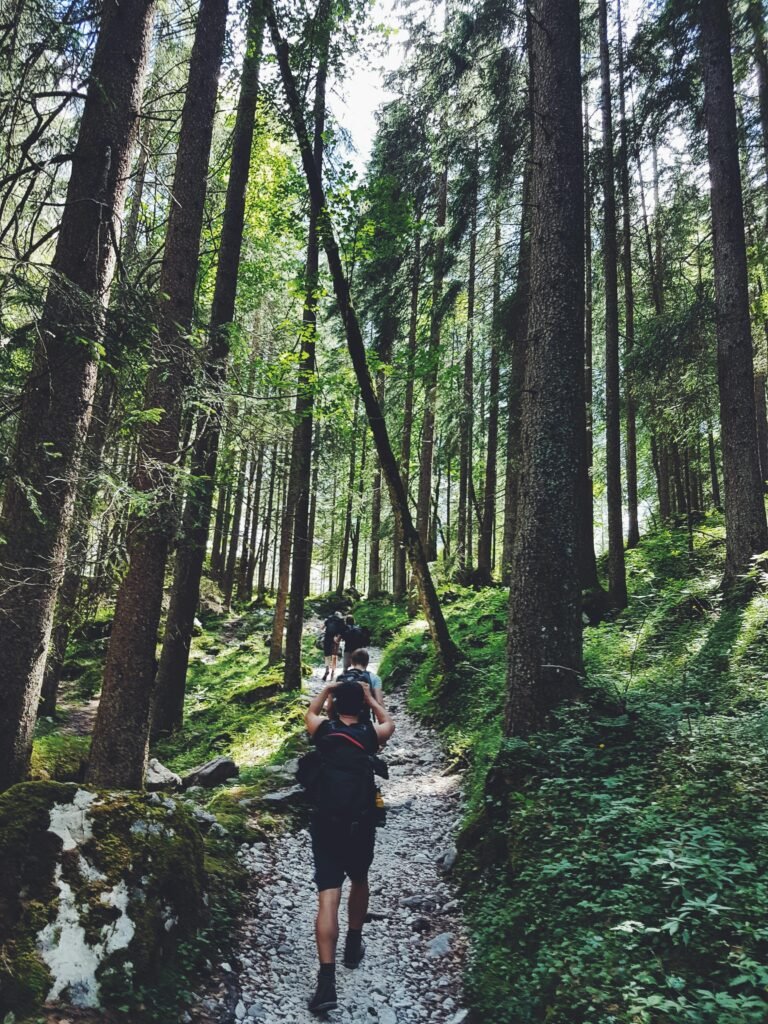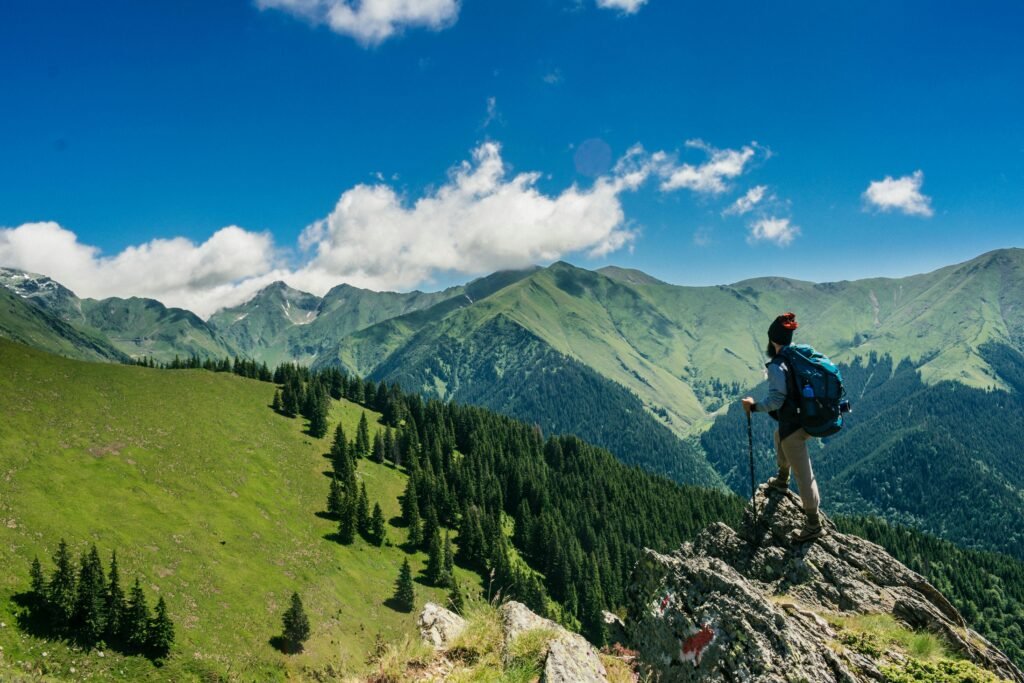HIKING IN SWEDEN
Exploring the Land of Lakes, Forests, and Fjälls.
Hiking in Sweden is a journey into the heart of Nordic wilderness, where dense forests, pristine lakes, coastal cliffs, and mountainous fjälls (arctic tundra) landscapes await. Sweden’s vast and varied terrain offers incredible opportunities for hikers of all levels, from short, scenic trails near urban areas to multi-day treks deep in the wilderness. Swedish hiking culture, rooted in the principle of “allemansrätten” (the Right of Public Access), ensures everyone has the freedom to explore the country’s natural beauty. Here’s a guide to hiking in Sweden, covering top hiking areas, trail highlights, and tips for getting the most out of your Swedish hiking adventure.
Why Hike in Sweden?
Diverse Landscapes:
Sweden’s natural landscape is incredibly diverse, offering everything from coastal paths in the south to alpine terrains in the north. Each season brings new colors and experiences, from the vibrant summer greenery to the snowy expanses of winter.
The Right of Public Access:
Allemansrätten grants the freedom to roam responsibly, allowing hikers to explore nearly all natural areas, even on private land. This freedom is unique to Sweden and promotes an open, respectful relationship with nature.
Well-Marked Trails and Infrastructure:
The Swedish Tourist Association (STF) maintains a network of marked trails, huts, and cabins across the country, providing safe and comfortable options for multi-day hikes. Trail maps, information boards, and signposts are commonly found, making hiking accessible even for beginners.
Peace and Solitude:
Sweden’s low population density means that many hiking areas, especially in the north, remain uncrowded and serene. It’s not uncommon to hike for hours or days without seeing another person, making it a perfect destination for solitude seekers.
Top Hiking Regions in Sweden
1. The Kungsleden (The King’s Trail)
Location: Swedish Lapland, stretching 440 km from Abisko to Hemavan
Overview: The Kungsleden is Sweden’s most famous hiking trail, offering breathtaking views of mountains, valleys, and rivers. This route takes hikers through several protected areas, including Abisko and Vindelfjällen Nature Reserves.
Highlights: A classic multi-day trek, the northern section (from Abisko to Nikkaluokta) is particularly popular, taking hikers near Kebnekaise, Sweden’s highest peak, and providing access to STF huts along the way.
2. Sarek National Park.
Location: Laponian Area, northern Sweden
-Overview: Known as “Europe’s last wilderness,” Sarek National Park is a destination for experienced hikers looking for a true backcountry experience. The park has no marked trails or huts, requiring navigation skills and self-sufficiency.
Highlights: Dramatic landscapes, including high peaks, glaciers, and expansive valleys, as well as a rich variety of wildlife, such as reindeer, moose, and even the occasional wolverine or bear.
3. Skåneleden Trail.
Location: Skåne County, southern Sweden
Overview: The Skåneleden Trail network covers over 1,200 km in southern Sweden, making it ideal for both short day hikes and longer journeys. The trails pass through coastal cliffs, beech forests, and scenic agricultural land.
Highlights: Sofiero Castle Gardens, Kullaberg Nature Reserve, Söderåsen National Park, and picturesque coastal views of the Öresund Strait.
4. The Höga Kusten (High Coast) Trail
-Location: Ångermanland, along the Gulf of Bothnia
Overview: The High Coast Trail is a UNESCO World Heritage site known for its dramatic coastline, unique geological features, and ancient coastal cliffs. The trail spans 130 km and is well-marked, with camping areas and huts.
Highlights: Cliffs with stunning sea views, Skuleberget mountain, and natural red granite landscapes shaped by post-glacial rebound.
5. Padjelantaleden Trail.
-Location: Lapland, near Sarek National Park
Overview: This 140 km trail offers a more accessible way to explore northern Sweden’s wilderness. It’s a less rugged alternative to Sarek, but still offers stunning views of arctic landscapes, with STF huts available along the route.
Highlights: Lakes, wide-open valleys, and Sami culture. Padjelanta National Park is home to reindeer herders, and hikers can experience some traditional Sami hospitality along the way.
6. Sörmlandsleden Trail.
Location: Near Stockholm, Sörmland County
Overview: The Sörmlandsleden trail network covers over 1,000 km and is easily accessible from Stockholm. It passes through forests, past lakes, and near historical sites, making it ideal for day hikes or shorter multi-day trips.
Highlights: Stunning forest scenery, quaint lakeside picnic spots, and a chance to explore Sweden’s Viking heritage near Stockholm.
Essential Hiking Tips for Sweden
1. Be Prepared for Weather Changes:
Even in the summer, temperatures can drop, especially in mountainous areas. Sweden’s weather is highly variable, and sudden rain or wind is common. Always carry layers, a rain jacket, and be prepared for colder conditions.
2. Use STF Huts and Cabins:
Many of Sweden’s popular trails are supported by STF huts, which offer basic accommodations and amenities. Booking in advance is recommended during peak seasons, though some huts are open year-round.
3. Respect Wildlife and Nature:
Sweden’s wildlife includes moose, reindeer, and a variety of bird species. Maintain a safe distance from animals, avoid disturbing nesting sites, and follow leave-no-trace principles to protect Sweden’s natural environment.
4. Pack Essentials for Remote Trails:
Some trails, like those in Sarek, are remote and unmarked, so a map, compass, and navigation skills are essential. Bring sufficient food, a first aid kit, and a camping stove, as you won’t find facilities or shops in these areas.
5. Consider Hiking in Late Summer or Early Autumn:
Late August to September is a fantastic time to hike in Sweden. The weather is typically stable, the landscape turns into beautiful autumn colors, and there are fewer mosquitoes than in early summer.
6. Stay Safe with the Right Equipment:
For hiking in mountainous regions, carry essential gear such as a sturdy backpack, water-resistant boots, a sleeping bag (if camping), and emergency equipment. Many trails have well-maintained paths, but it’s essential to be prepared for unexpected situations, especially on longer routes.
7. Experience Sami Culture Respectfully:
Northern Sweden is home to the Sami, the indigenous people of the region. If you encounter reindeer herding areas or Sami communities, approach respectfully, as these areas are central to Sami livelihoods and cultural heritage.
Sweden’s hiking trails offer an extraordinary way to experience the beauty, solitude, and cultural richness of the Nordic wilderness. From the legendary Kungsleden and remote Sarek National Park in the north to the coastal Skåneleden and High Coast trails in the south, Sweden has options for all levels and interests. Embrace the freedom of the Right of Public Access, pack for unpredictable weather, and immerse yourself in Sweden’s breathtaking natural landscapes. Hiking in Sweden is more than an adventure; it’s an invitation to connect with nature and the timeless beauty of Scandinavia.

